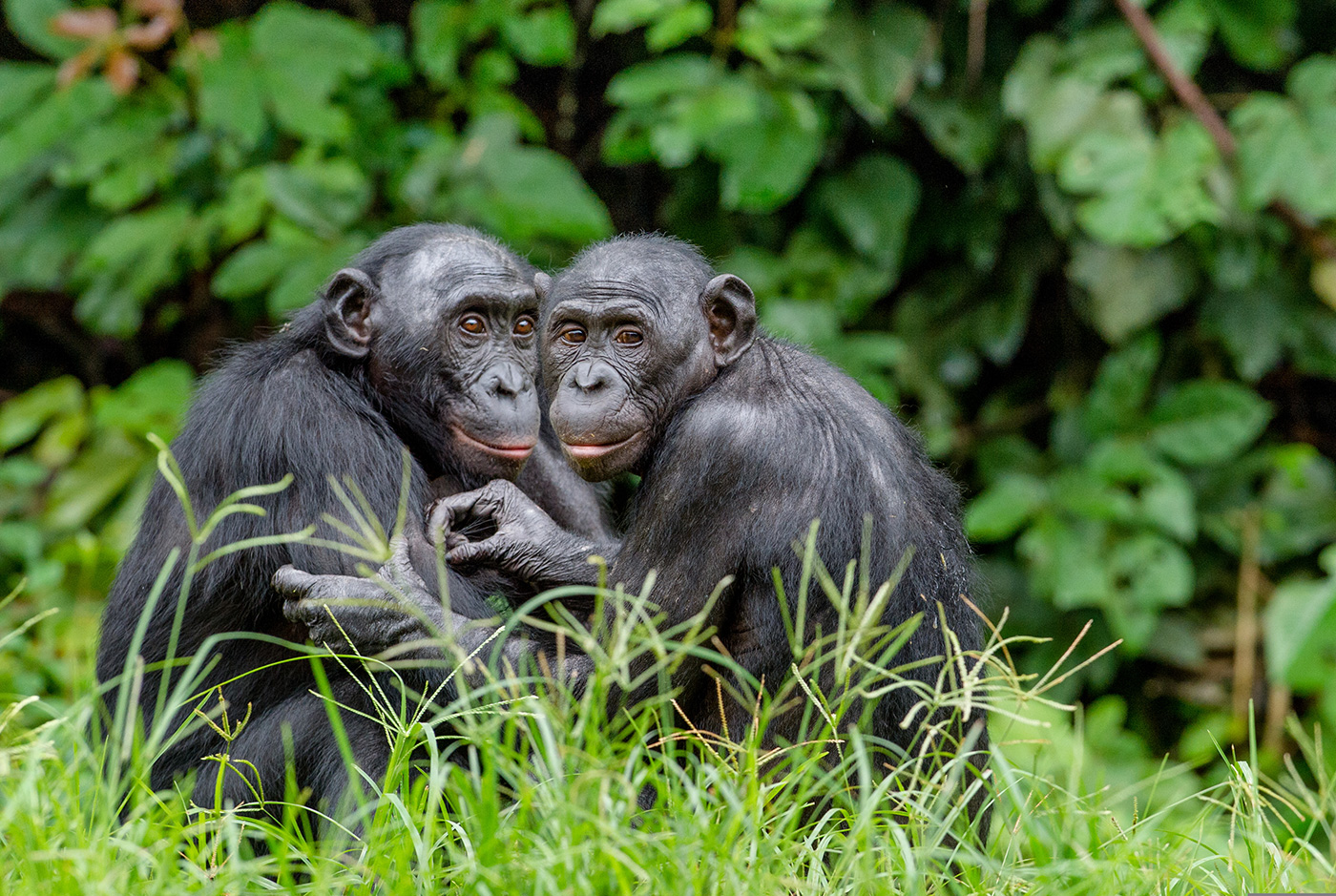Bonobo
(Pan paniscus)

Congo basin in the Democratic Republic of the Congo
Did you know we only live in the Congo basin? The Congo River separates us from our chimpanzee relatives on the other side — because the Congo River is the deepest in the world, and we don’t want to swim in it.
About me
Along with our chimpanzee relatives, we’re the closest living relatives to you humans, and we share 98.7% of the same DNA as you. We’re smart, social, and strategic — and we have complex social interactions. We’re usually less aggressive than chimpanzees (but that doesn’t mean we can’t fight). We’re capable of literally kissing and making up, and we generally don’t compete with each other as much as our chimpanzee cousins do. We think it’s because we evolved in a region where food and water was plentiful, so we learned to work together by foraging and cooperating without having to fight.

Fast Facts: Did you know?
Our society can be described as matriarchal — female bonobos like me form very close bonds — we have our own dominance rituals, we collaborate to fend off male aggression, and we leave to find and lead our own communities.
Our society can be described as matriarchal — female bonobos like me form very close bonds — we have our own dominance rituals, we collaborate to fend off male aggression, and we leave to find and lead our own communities.
We like fruit the best, but we also eat tons of plants, bugs, mushrooms, honey, and eggs when we come across them. Most people don’t know this about us, but we do sometimes hunt, including other primates like Colobus monkeys, and we’ll eat small animals if we get the chance! We make night nests after the last meal of the day.
The rainforests of the Amazon, Congo, and Indonesia are our last best line of defense against the biodiversity and climate crisis. But 17 corporations are making massive profits by driving their destruction and the violation of human rights. That has to end NOW.
Why I want to Keep Forests Standing
There are fewer than 50,000 of us in the wild, and we’ve had a sharp population decline in recent decades. Conservation efforts are complicated, with a history of national parks being used as a way to displace Indigenous people from their homes.



 Congo basin in the Democratic Republic of the Congo
Congo basin in the Democratic Republic of the Congo











